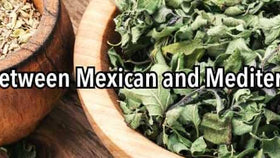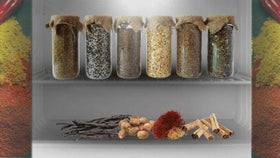Cinnamon: Verum vs Ceylon
Cinnamon: Verum vs Ceylon
Cinnamon is such a spectacular ingredient, contributing a remarkable fragrance and unique spicy kick to any recipe it is added to. In fact, it is one of few spices that spans the realms of both sweet and savory, enhancing the flavor profiles of the other ingredients in each recipe.
Navigating the world of cinnamon can be perplexing, though. Deciphering the different types of cinnamon based on physical properties, growth regions, and concentrated flavors is tricky enough—add in the fact that each individual type has various names and heads may begin to spin. A common question revolves around the difference between Verum and Ceylon.
So what is the difference in cinnamon types? When it comes to Verum vs Ceylon, there is none. It’s simply two names for the same type of cinnamon. And it gets even more complicated because it has a third moniker—true cinnamon.
Cinnamomum Verum is a tree native to Sri Lanka. The bark of the tree is used to make true cinnamon. Cinnamomum Verum is actually one of two scientific names for this particular type of cinnamon, the other being Cinnamomum Zeylanicum, but you will hear it most commonly referred to as Ceylon cinnamon because of where it came from.
You see, from 1815-1948 the island, which was formerly known as Ceilão (as named by Portuguese) was under British rule. During this time, the then colony was renamed Ceylon. The name was slightly altered to the Dominion of Ceylon after the island gained its independence and wasn’t changed to Sri Lanka until 1972.
The history of true cinnamon is as rich as the island it came from. It was employed as a fragrance in the embalming process by Egyptians, aided medical treatments in medieval times, was used as a natural preservative for meats, and was traded as a luxury spice in the 16th century but the source of the coveted spice was a mystery to the Europeans who had fallen in love with it and the demand kept rising. So explorers, including Christopher Columbus set out on a cinnamon discovery mission. It wasn’t until 1518 that the Portuguese found the source of true cinnamon on the island of Sri Lanka. The Dutch seized the trade from Portuguese and from there it changed hands multiple times from French to Dutch to British.
Through the many hands that have held control over the cinnamon trade and the various cultures that hold love for the spice, Ceylon cinnamon is actually referred to by many other names than the original three I mentioned earlier in this post. To Italians, it is canella (or cannon) and by kwai in the Cantonese language.
But as Juliet proclaimed in the beloved Shakespearean classic, “a rose by any other name would smell as sweet’. The same is true for this particular type of cinnamon. Whether referred to as Verum, Ceylon, Sri Lankan, or true cinnamon, the subtle yet sweet taste and spicy aroma can’t be matched.
It absolutely is the only true cinnamon. Other cinnamon is merely a substitution for the real thing; they come from Cassia bark and have a harsh flavor that we don’t find suitable for most recipes—certainly not baked goods!
What are your favorite uses for Ceylon cinnamon? Share your recipes in the comments!







Slofoodgroup
Author